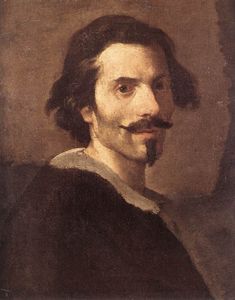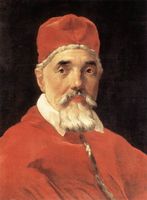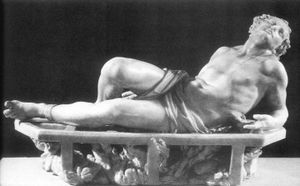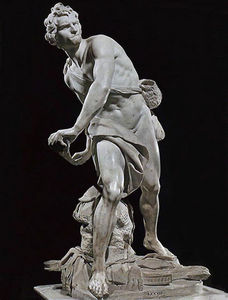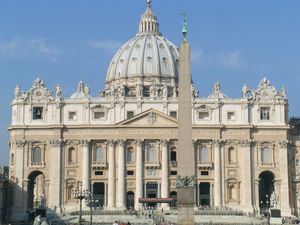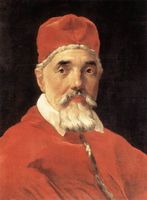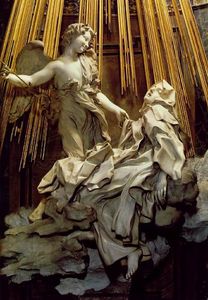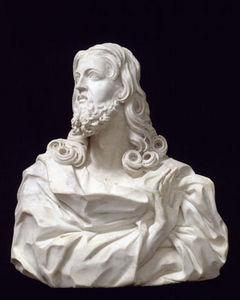Gian Lorenzo Bernini Biography
- Full Name:
- Gian Lorenzo Bernini
- Short Name:
- Bernini
- Alternative Names:
- Giovanni Lorenzo Bernini, Gianlorenzo Bernini
- Date of Birth:
- 07 Dec 1598
- Date of Death:
- 28 Nov 1680
- Focus:
- Paintings, Sculpture, Architecture
- Mediums:
- Oil, Mixed, Stone
- Subjects:
- Figure
- Art Movement:
- Baroque
- Hometown:
- Naples, Italy
- Architecture:
- Palazzo BarberiniCathedra PetriSaint Peter's baldachinSaint Peter's Square & Colonnade
- Gian Lorenzo Bernini Biography Page's Content
- Early Years
- Middle Years
- Advanced Years
Gian Lorenzo Bernini Early Years
Star sculptor of the seventeenth century, Gian Lorenzo Bernini was born in Naples on December 7, 1598 to a Mannerist sculptor father from Florence, Pietro Bernini, and a Neapolitan mother, Angelica. Bernini's fate as one of the most significant artists in history was determined from the outset, as his father dedicated time to giving his son art lessons, instructing him in the ways of the craft, and promoting the child prodigy at any opportunity.
When he was 8 years old, Bernini's father took him to Rome, then the artistic center of the Western world. Legend has it that when the proud father managed to wheedle an audience with Pope Paul V, the budding (and cunning) artist executed a fast and flattering portrait of Saint Paul, eliciting the admiration of the Pope. Believing himself to be in the presence of the "next Michelangelo," the Pope demanded that the boy begin his formal artistic education at once. Pope Paul named future successor Cardinal Maffeo Barberini as Bernini's guardian and educator, and the boy quickly revealed himself to be an artistic genius.
Many historians have commented on the fact that despite all the praise and acclaim already received in childhood, Bernini was known for his easy-going, friendly and witty personality, quite distinct from such darkly roguish master artists as Michelangelo or Caravaggio. Underneath the smiling exterior, however, Bernini also had a darker side to his personality: the handsome, swarthy youth took the notion of suffering for his art to new heights when at the age of 15 he burned his own leg in order to observe the expression of pain on his face in study for his sculpture of The Martyrdom of San Lorenzo. This leaning towards the macabre would resurface later in life, with disastrous results for Bernini's personal and professional reputation.
In his late teens, Bernini was snapped up by Cardinal Scipione Borghese, nephew to the pope and notoriously ruthless art collector. Here the young artist was exposed to new stylistic influences, including classical antiquities, Renaissance masters like Michelangelo and Raphael, and contemporaries like Caravaggio. Bernini executed some of his early masterpieces for Cardinal Borghese, including the stunning Pluto and Persephone and Apollo and Daphne, and of course his famous answer to Michelangelo, David.
Bernini achieved widespread renown after his career was launched by the Cardinal, receiving a plethora of supremely coveted papal commissions from Pope Urban VIII (who named the artist official architect of St. Peter's in 1629), associating freely with princes and papacy alike, and even being knighted in 1621 at the ripe old age of 23. Bernini literally began to take over Rome, not only with his sculptures, but also with important architectural commissions and his "side line" occupations as painter, playwright, composer, theatre designer, and caricaturist.
Gian Lorenzo Bernini Middle Years
During these busy, peaceful days, despite increasing pressure to marry and produce an artist genius son of his own, Bernini claimed he had neither time nor need for a wife, and that his sculptures were his only children.
Bernini's commitment avoidance would become a thing of the past, however, when Matteo Bonarelli arrived in Rome in 1636 to work in the artist's workshop, accompanied by his wife, Constanza. Bernini and Constanza began a torrid affair until, around 1640, Bernini discovered that Constanza was also seeing his younger brother, Luigi. Beside himself with rage, Bernini surprised them during a nocturnal tryst and attempted to bludgeon his brother to death with an iron crowbar. As he only managed to break two of Luigi's ribs, later Bernini went after him with a sword, forcing his brother to take refuge in Santa Maria Maggiore; in the meantime, the artist had his servant surprise Constanza at home in bed and slice her face to ribbons with a razorblade.
In the end, the assistant that Bernini sent to do his dirty work was imprisoned for assault, Constanza was imprisoned for adultery and fornication, and Luigi was exiled to Bologna, but Bernini's paltry 3,000 scudi fine was pardoned by the pope. The artist went on to marry and have eleven children with Caterina Tezio, a legendary Roman beauty.
This tumultuous period in Bernini's personal life coincided with disaster in his professional life. Pope Urban VIII had commissioned the sculptor to finish a bell tower for the façade of St. Peter's, which the sculptor designed to grandiose, monumental and, ultimately, disastrous proportions: the bell tower developed cracks and was feared to threaten the structural integrity of the façade.
Succeeding pope Innocent X had it torn down in 1646, and both popes severely chastised Bernini for his prideful failure. Although today it is known that it was in fact the fault of structural weakness in the façade itself that caused the cracking, and thus Bernini was not to blame, at the time the artist was crushed by this defeat and according to contemporary sources took to his bed, fasting nearly to the point of death.
Gian Lorenzo Bernini Advanced Years
Bernini's luck was to change in 1647 when Cardinal Federico Cornaro commissioned a work dedicated to St. Theresa of Avila for his chapel in Santa Maria della Vittoria. The resulting sculpture, The Ecstasy of St. Theresa, is recognized by many as perhaps the supreme achievement of seventeenth century sculpture. The work was so beloved in its own time that Bernini's career immediately rebounded, and the artist went on to receive papal and royal commissions alike.
Bernini won the friendship and patronage of Queen Christina of Sweden, and King Louis XIV invited him to France to submit designs for Versailles (which were ultimately rejected, due at least in part to Bernini's disdainful criticism of all things French while in the country). Contemporary reports say that when Bernini arrived in France in 1665, the sculptor was so famous that onlookers lined both sides of the streets to catch a glimpse of the artist.
Bernini lived to the ripe old age of 82, and spent the last years of his life attending mass, practicing religious exercises, and preparing for death. In the last two years of his life, and after losing the use of his right arm following a stroke, the artist undertook his "death" sculpture, a Bust of the Savior (the Salvator Mundi), which upon his death was bequeathed to Queen Christina of Sweden.

